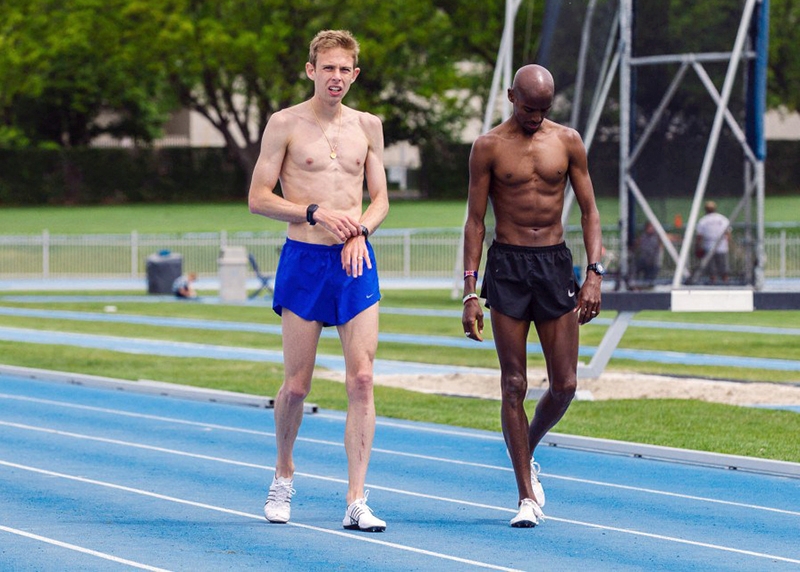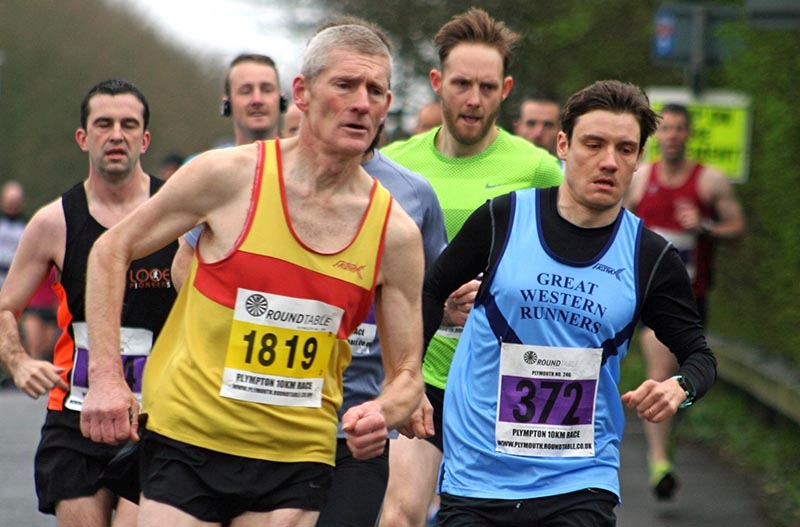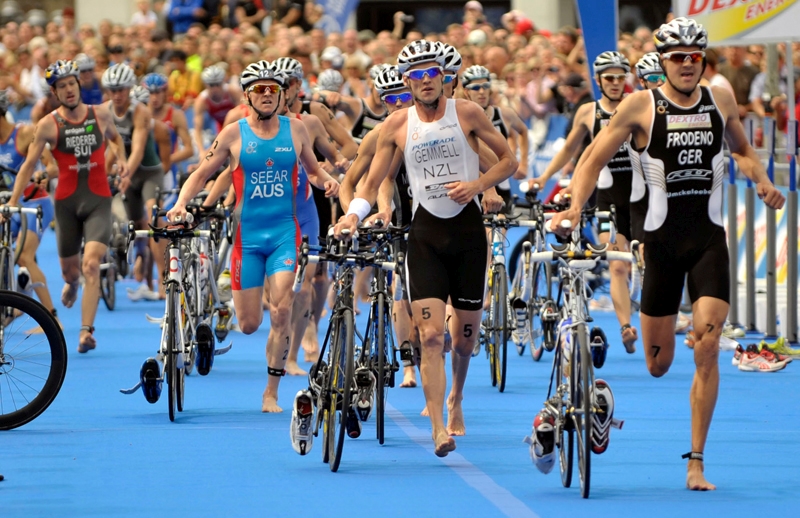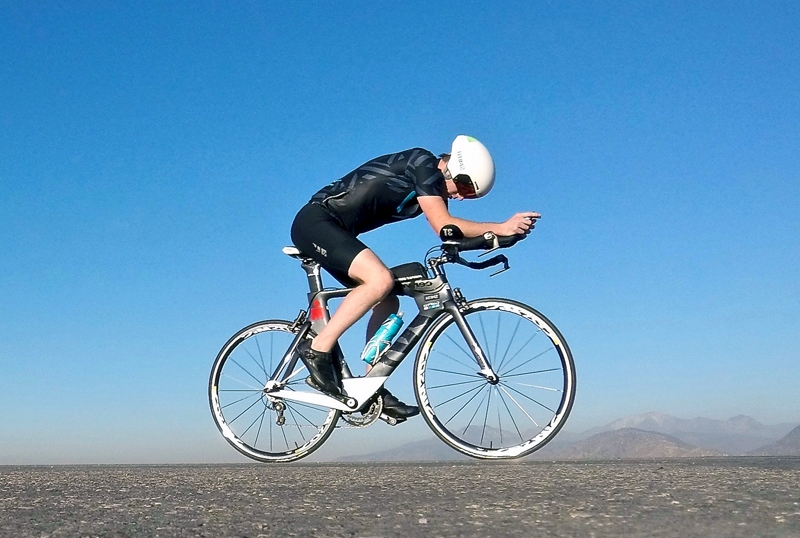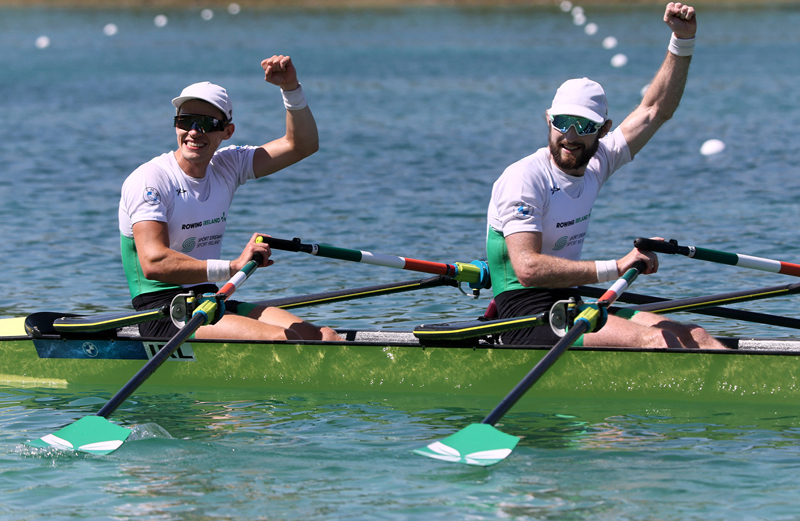You are viewing 1 of your 1 free articles. For unlimited access take a risk-free trial
Testing, testing: improve what you can measure!
Andrew Hamilton looks at some simple and inexpensive methods that endurance athletes can use to track their aerobic power
How do you know if your training program is producing the right kind of gains? The acid test of course is if your race times are coming down. But that assumes all your races are run in identical conditions on identical courses against identical components and at the same time of day (yes, your body’s circadian rhythm significantly impacts your performance at different times of the day – read more here). Besides, supposing you don’t race regularly; can you afford to spend weeks or months training for the big day without knowing how much training adaptation (ie fitness gains) are being generated?Measurement is the key
The key of course is measurement. If you can regularly measure key fitness components, you can easily discover whether your fitness is increasing, has reached a plateau, or is even decreasing! This then allows you to make any necessary adjustments to your training program. Some components of fitness are easy to measure; strength for example is easily assessed, by seeing how much weight you can lift in a 1-rep max (1RM) test for key muscle groups. Likewise, you can easily check flexibility by performing a few stretches and simply measuring your range of movement with a tape measure.For endurance athletes however, aerobic (or cardiovascular fitness) is much more difficult to get a handle on. To perform a really accurate measurement requires skilled technicians in a laboratory setting, which is often impractical and almost always very expensive! However, while athletes performing at the very highest level may require that nth degree of accuracy, most recreational athletes don’t. And that’s good news because with a bit of jiggery pokery borrowed from exercise physiology, it becomes possible to get a reasonably good idea of your aerobic fitness.
Defining aerobic fitness
The human body has virtually no oxygen storage capacity. Since continual oxygen availability is required to produce the bulk of energy expended during endurance exercise, your maximum sustainable intensity is largely determined by how quickly you can get oxygen from the air, transported round to and absorbed by the working muscles. This ability take in, transport and use oxygen is the single most important measure of fitness, and is known as aerobic capacity. In essence, when you test aerobic fitness, you’re trying to measure how efficient your oxygen transport system and usage is.Maximum aerobic power
At high workloads, your muscles need large amounts of energy and therefore lots of oxygen. As the exercise intensity is further increased, there comes a point when your oxygen transport system is working flat out – it simply cannot pump any extra oxygen around to the working muscles. This is known as your maximum aerobic capacity or maximum oxygen uptake (VO2max) and as you approach this point, you’ll reach the limit of your sustained power output. All other things being equal, the higher your VO2max, the faster you’ll be able to row, run, swim, cycle etc. for long periods of time without fatigue. VO2max can be expressed in two ways:- *Absolute VO2max – this expresses the maximum amount of oxygen in litres you can absorb, transport and deliver to working muscles each minute. The units are litres of oxygen per minute (L/min).
- *Relative VO2max – this is a more useful expression of aerobic capacity, because it takes into account your body weight and expresses how much oxygen you can absorb, transport and deliver to each kilogram of your body per minute – aerobic power-to-weight ratio (read more about power-to-weight ratio in this article). The absolute oxygen uptake figure in litres per minute is less important that the aerobic power-to-weight ratio – ie how much oxygen you can pump to each kilo of body weight per minute. This relative VO2max figure is a much better indicator of your ability to sustain endurance activities than is absolute VO2max. The units of relative VO2max are millilitres of oxygen per kilo of body weight per minute (mls/kg/min).
Direct measurement of VO2max
The most accurate way of measuring maximum aerobic capacity is to directly measure the amount of oxygen being used during flat-out exercise(1). However, this requires controlled laboratory conditions including the use of a gas analyser, which can calculate exactly how much oxygen has been used by comparing the oxygen content of inhaled and expired air. But while this method is extremely accurate, there are major drawbacks, which is why it tends to be confined to a laboratory setting:- #Cost and complexity – this type of test is expensive and difficult to administer, requiring sophisticated scientific equipment and properly trained and skilled technicians.
- #Discomfort - working at maximum aerobic capacity is very hard and unpleasant, even for those who are highly trained!
- #Motivation – unless the subject is willing to put him or herself through considerable discomfort to reach their MHR, the results may be inaccurate and underestimate the true VO2 max.
- #Disruption - maximal testing is very draining and can affect training in the post-testing period.
- #Risk – maximal aerobic testing carries with it a risk of an adverse cardiac event, albeit a very small one (see later)(2).
Indirect measurement of VO2max
The good news is that providing you don’t mind sacrificing a little bit of accuracy, you can get a surprisingly good estimate of your VO2 max, without directly measuring oxygen consumption. Although considerably less accurate than a direct test, there are certain advantages, one of which is that can be performed at sub-maximum heart rates. Sub-maximal tests work because it just happens that over much of your heart rate range, there is a linear relationship between the heart rate and the amount of oxygen being consumed. This means that if you know how much oxygen is being consumed at a ‘sub-maximal’ (and comfortable) heart rate, and you know your theoretical MHR, then you can predict upwards what your maximum oxygen carrying capacity (or VO2 max) in litres per minute would be if you were worked flat out at maximum heart rate. Sub-maximal testing therefore avoids all of the problems outlines above and other than a heart rate monitor, requires no fancy kit whatsoever.The drawback with indirect testing is accuracy, or rather lack of it. Firstly, in order to work out how much oxygen is being consumed, you have to know accurately how much work is being done – in terms of watts or kcals per hour. That’s because there’s a direct chemical relationship between oxygen consumption and energy produced; it takes 1 litre of oxygen to produce 5kcals of energy, or to put it another way, it takes 1 litre of oxygen to supply 350watt.minutes of energy (e.g. the amount required to work at 70 watts for 5 minutes, 140 watts for 2½ minutes, 280 watts for 1min 15secs and so on). This means that for an accurate result on equipment like rowers and bike ergometers, you need a true reading of workload – and this is seldom the case.
However, running, walking and stepping tests avoid this potential problem – instead they use the fact that it takes a known amount of oxygen to propel each kilo of body mass over a meter (walking = 0.1mls of oxygen per kilo per meter; running = double this) and that it also takes a known amount of oxygen (1.8mls of oxygen per kilo of body mass per meter gained) to raise the body against gravity. That said, even these formulae are generalisations and therefore prone to error.
The second problem arises from the fact that the formula commonly used to calculate MHR (220 - age) is very generalised. If you push someone to their limit, you frequently find that their actual MHR is significantly higher or lower than the theoretical one derived from the formula. This is important, because in a sub-maximal test, you test oxygen consumption at a relatively low heart rate then extrapolate upwards to calculate what it would be at MHR. But if the formula derived MHR is wrong, then so is your extrapolation. However, providing you’re aware of the limitations of sub-maximal testing and prepared to accept a degree of approximation, it can still be a very useful in getting a handle on your aerobic fitness. Maximal testing on the other hand tests at MHR and so avoids this potential pitfall. But of course, it’s much harder too!
What self administered aerobic tests can you do?
There are a large number of tests and the best one to choose will depend on your own sport and circumstances. As a rule of thumb, it’s best to be sport specific; cyclists will generally get a more accurate result on a cycling ergometer test, runners will get a better result on a running test and so on. If you haven’t got access to equipment with accurate workload readings, don’t worry – some of these tests require no equipment at all! However, bear in mind that all these tests – whether maximal or sub-maximal - provide estimations of VO2max, not direct measurements. However, research also indicates that while these kinds of tests are subject to error, they provide enough accuracy to enable useful comparisons to be made over time (ie fitness trends)(3,4).1.5 MILE RUN TEST
This is based on the ‘Cooper Run Test’(5) and is a very simple test to calculate relative VO2 max, although being maximal, it shouldn’t be used on ‘at risk’ individuals without prior medical clearance (see later). The aim of the test is to run a distance of 1.5miles on the flat as fast as possible. The estimated VO2max is then given as:VO2max = 3.5 + (483 ¸ time taken in minutes) mls/kg/min
As an example, someone taking 11 minutes would score 3.5 + (483/11) = 47.4mls/kg/min.The next four tests can be performed maximally or sub-maximally. The maximal test will produce more accuracy because you’ll achieve something near to MHR and therefore won’t have to estimate this. If you test sub maximally, you’ll effectively be measuring your oxygen carrying ability at part-throttle and then using your theoretical MHR to predict your maximum oxygen carrying power if you were forced to work flat out. In order to do this you need to calculate what % of your heart rate reserve you have been using during the test, scale it up to 100% (your maximum heart rate reserve) then apply the scaling up factor to your measured oxygen uptake figure.
Converting from sub-maximal to maximal
To illustrate, let’s take an example of a 40-year old runner with a resting heart rate of 70bpm, who having done a sub-maximum treadmill test, achieves an oxygen uptake figure of 35mls/kg/min at a heart rate of 150bpm. Heart rate reserve (HRR) is given by the following:[HRR = max heart rate – resting heart rate]
For a 40-year old, the predicted maximum heart rate is 220 – 40 = 180bpm. Heart rate reserve is therefore 180bpm – 70bpm; i.e. 110bpm. If the runner achieved 150bpm during exercise, this is 80bpm above resting out of a possible maximum 110bpm above resting. She therefore achieved 80/110 of her max heart rate reserve, which = 72%. To scale extrapolate her oxygen uptake figure to that at her maximum heart rate, we need to multiply it by 110/80, which gives 35mls/kg/min x 110 ¸ 80 = 48mls/kg/min. If you’re mathematically minded, the general sub-max to maximal conversion is:Maximal oxygen consumption = Sub-max oxygen consumption X ([max heart rate – rest heart rate] divided by [test heart rate – rest heart rate])
Remember though, you only need apply this if you’re testing sub-maximally. If you test at MHR, you don’t need to extrapolate upwards to MHR, because you’re already there!TREADMILL TEST
The equation you need here is:Oxygen Uptake = [speed(mph) x 5.36] + [speed x gradient(%) x 0.24] + 3.5
E.g. – suppose you’re running at 7mph on a 3% gradient. Your oxygen consumption is [7mph x 5.36] + [7mph x 3 x 0.24] + 3.5 = 37.5 + 5 + 3.5 = 41.5mls/kg/minWALKING TEST
The walking test has a similar equation:Oxygen Uptake = [speed(mph) x 2.68] + [speed x gradient(%) x 0.48] + 3.5
E.g. – walking at 4mph up an 8% incline; oxygen consumption is [4mph x 2.68] + [4mph x 8 x 0.48] + 3.5= 10.7 + 15.4 +3.5 = 29.6mls/kg/min
STATIONARY CYCLING
This is a relatively simple equation:Oxygen Uptake = ([power output in watts x 10.8] divided by your weight in kilos) + 7
E.g. a 70kg person cycling at 200 watts; oxygen consumption is ([200watts x 10.8] ¸ 70kgs) + 7 = (2160 ¸70) + 7 = 30.8 + 7 = 37.8mls/kg/minSTEPPING TEST
You can also use stepping to calculate oxygen uptake:Oxygen Uptake = [0.2 x stepping rate (steps per minute)] + [2.4 x step height (meters) x step rate] + 3.5
Step rates should be between 12 and 30 steps per minute; step height between 0.04 and 0.40 meters (1.6 – 16 inches).Practical tips for maximal testing
Increase the speed/gradient/resistance in small increments every 3 minutes or so until you reach the point where you can no longer continue. Do not exceed 15% gradient(6).Record the watts/speed/gradient etc. for the last 3-minute segment you were able to complete and use those figures in the calculations. The figure you get will be your maximum oxygen uptake capacity Remember, maximal testing is not only unpleasant; it also carries potential risk, particularly for anyone with a history of or current cardiovascular health condition, and potentially for novice/recreational athletes who are unused to working at high intensities. Remember, if you have any doubts about your ability to undertake such a test, seek medical advice from your physician/GP first!Practical tips for sub-maximal testing
Choose a speed/gradient/resistance that enables you to achieve around 70% of your predicted max heart rate. Make sure your heart rate is constant before you record your heart rate (check it initially and again after 4 minutes; it should not have risen). Now calculate your sub-maximal oxygen uptake figure and apply the extrapolation outlined above to give you your predicted maximum oxygen uptake figure.Using your results
- #Don’t get hung up on the actual figure; it is only an estimate of your aerobic power, and will vary according to age and training background(7,8). In addition, it won't tell you how near to VO2max you can sustain without significant lactate accumulation (that's a whole new topic!). Instead, look for trends over time.
- #When repeating tests, try to replicate the conditions: same time of day, same prior loading (eg don’t do one test when fresh and another when very fatigued), same nutritional status (eg same level of hydration, not one with prior caffeine and one without).
- #Don’t test too frequently as testing in unlikely to pick up very small changes; once a month is ample.
- #Use your results in conjunction with a training diary; try to relate increases in your aerobic power with your training program over the previous month.
- Meas Phys Educ Exerc Sci. 2009;13:1–12
- Med Sc Sports Exerc: 2015 Nov (47) 2473-2479
- CSM’s Metabolic Calculations Handbook. Lippincott Williams & Wilkins, Baltimore. 2007:25–74
- Hippokratia. 2013 Apr-Jun; 17(2): 136–140
- Br J Sports Med. 1995 Sep;29(3):147-52
- Sports Med. 2008; 38(6):441-7
- Med Sci Sports Exerc. 2000 Jan; 32(1):70-84
- Med Sci Sports Exerc. 1992 Apr; 24(4):456-61
Newsletter Sign Up
Testimonials
Dr. Alexandra Fandetti-Robin, Back & Body Chiropractic
Elspeth Cowell MSCh DpodM SRCh HCPC reg
William Hunter, Nuffield Health
Newsletter Sign Up
Coaches Testimonials
Dr. Alexandra Fandetti-Robin, Back & Body Chiropractic
Elspeth Cowell MSCh DpodM SRCh HCPC reg
William Hunter, Nuffield Health
Keep up with latest sports science research and apply it to maximize performance
Today you have the chance to join a group of athletes, and sports coaches/trainers who all have something special in common...
They use the latest research to improve performance for themselves and their clients - both athletes and sports teams - with help from global specialists in the fields of sports science, sports medicine and sports psychology.
They do this by reading Sports Performance Bulletin, an easy-to-digest but serious-minded journal dedicated to high performance sports. SPB offers a wealth of information and insight into the latest research, in an easily-accessible and understood format, along with a wealth of practical recommendations.
*includes 3 coaching manuals
Get Inspired
All the latest techniques and approaches
Sports Performance Bulletin helps dedicated endurance athletes improve their performance. Sense-checking the latest sports science research, and sourcing evidence and case studies to support findings, Sports Performance Bulletin turns proven insights into easily digestible practical advice. Supporting athletes, coaches and professionals who wish to ensure their guidance and programmes are kept right up to date and based on credible science.

